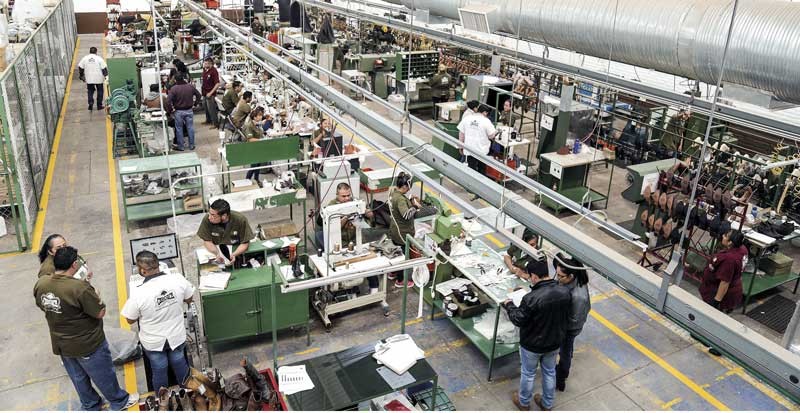


Source: CICEG, with data from AGA-IMSS-EMIM-INEGI

“There are many factories in Mexico that due to the pandemic have increased their technological level, because they found it necessary to have less labor due to health problems and difficulties in hiring personnel.
At present, there is an adequate technological level, with very modern industries that are on a par with the best factories in the East. Many of them are increasing their production capacity, are taking important orders after SAPICA, and are supplying both the domestic and foreign markets."
“In this aspect, there is a labor shortage, due to the fact that almost 20% of the workers were lost due to the pandemic, of which a third part has recovered. The sector in general, fell by 30% in 2020 and grew by 15% in 2021. After SAPICA there were many orders for footwear, but the workers are not returning to the factories, because many of them went to work in other sectors of activity, or simply do not want to work in footwear. This forces the sector to pay better salaries and improve the treatment of employers towards workers. In this way, we are recovering the necessary workforce.
We also have problems with merchants who are not accepting price increases, which makes it difficult to pay better wages. We must increase productivity and work hard to get workers back into the factories.”
“Regarding international brands, there are 74 that are manufacturing in Mexico, among them, STEVE MADDEN, TIMBERLAND, WOLVERINE, H.H. BROWN, SEBAGO, CATERPILLAR, VANS, CLARKS, AMERICAN EAGLE, HUNTER, HARLEY DAVIDSON, and many others. We also have 42 brands that are shipping products to Australia, Colombia, Canada, Guatemala and the United States. And others that send to their markets such as BLOCKSTORE, GRUPO TEMPE, ROGER, CAMINANDO from Japan, HUSH PUPPIES, FALABELLA, BATA and ARTURO CALLE. Of the total exported, 90% is with international brands and 10% with Mexican brands."
“Regarding exports, Mexico has tariff preference for the entry of its products into the United States, agreed in the T-MEC trade agreement, which I believe until now, has been little exploited in light of the conflicts that took place between the United States and China. In this sense, Asians, in addition to the current tariffs, must pay a punitive tariff, while Mexico can enter merchandise with a 0% rate. For this reason, it is not surprising that 90% of our footwear exports are destined for the United States. In this case, I recognize that Mexico has a tariff advantage, which could be used more widely."

“To increase the exportable offer we have a COEX program -Export Competitiveness- that certifies industries with export capacity. In this way, for many international companies looking for maquiladora factories, they can contact reliable Mexican industries that assure them of the quality and delivery of the product they require.
For those companies that do not have the necessary score, the CICEG Chamber gives them training and advice, to obtain the points that allow them to access areas of opportunity”.
“In this regard, we have only had from the State, but we did not have from the Federal Government. In Mexico, we have a government that does not support companies, affecting economic performance, and it is known internationally that this government does not care about the private sector. On the contrary, it hurts us with different political decisions. All the support we have obtained has been from the State, including the Municipal Government, but not from the Federal Government”.
“I think the global footwear market is recovering. To the extent that there are no closures of economic activity and that people stop doing home-office, and are already beginning to move, have parties and meetings, in addition to going back to school, all this has helped to rescue the global footwear consumer market.
Here in Mexico, last year it increased by 20%, it has not yet recovered pre-pandemic levels, but the important thing for us is that production grows more than imports. Last year, for example, imports grew by 30%, with a market that grew by 20%. Thus, imports continue to gain ground, especially Asian imports. My perspective on the restoration of the world market is favorable, but we are concerned that the recovery of consumption in Mexico will benefit Asian producers more than national ones."
RELATED ARTICLES:
- "Mexican footwear must take advantage of the situation", affirmed analysts
- Faced with less Chinese supply, Mexico takes advantage to sell more shoes to the USA
- Mauricio Battaglia: new president of the Guanajuato Footwear Chamber